FRAMING STATEMENT
We were set the task of producing a site specific performance within the Lincoln University Library. We had to relate to the site itself and produce a piece that could explore various elements of the library: from the buildings history or the books our possibilities were endless. In our case our group consisting of Jessica Bark, Harry Walsh and myself were drawn to the books and literature. From these initial thoughts we slowly brought together our ideas.
Our aim is to prepare students for an experience that will be engaging and scary, through relating to adult life from work/jobs and other obstacles that may arise in their futures, all through references from well know fairy tales. We want the style of the room to be as if the partaker has woken up in a nightmare – The use of the fairy tale installation also has the advantage of being able to reflect back into the partakers own thoughts and fantasies of childhood fairy tales, but we aim to twist them by using The Brothers Grimm (2009). This enables the partaker to envisage past, present and future. The twist of using Grimm fairy tales emphasises the idea of growing up, but through relating to the likes of Bruno Bettelheim we want the students/adults to gain “emotional growth” and to get lost in a fantasy and believe in the “magic” even in adulthood.
As well as the installation itself we want the partaker to have enough time to fully engage and explore the installation we produce, from the outside of the window to exploring and looking at all the props and accessories in the room itself. As well as the installation we plan to have one to one performances between Jess, Harry and I performing as characters from the Grimm fairy tales. Each performer will give the partaker a task to do that relates to our own characters story.
“Every child believes in magic, and he stops doing so when he grows up” (Bettelheim, 1976, p118)
The Uses of Enchantment explains how Bettelheim believed in fairy tales being important for children to gain emotional growth, which would prepare them for their own futures. Relating this back to our own ideas, we want our installation to reflect the idea of the university library being a place that can be frightening, because of new beginnings and working towards a successful life/career.
We plan to produce this installation/performance in the Lincoln University Library on the second floor in Group room 6 ‘The Worth Room’. We chose this room because of the interesting architecture of the window and this could be a metaphor for judging a book before entering and delving into the fairy tale world that we want to create inside the room.
In terms of the performance itself we plan to perform on the 7th May 2015 from 12am to 9pm as the performance is one to one we will create a doodle poll for individuals to sign up for a time that best suits them. Each slot will be half an each so we will have enough time to performance and reset before the next partaker’s slot. We decided to call our piece Fear of Fantasy as we felt that it gave a clear understanding of the concept of our piece.
ANALYSIS OF PROCESS
The University Library
“The play-as-event belongs to the space, and makes the space perform as much as it makes actors perform” (Pearson, 2010, p1)
The University Library is a space I consider to be a habitation for work and concentration, from lively group meetings on the ground floor to studying in silence on the third floor. When reflecting on the quote from Pearson’s Introduction to Site Specific Performance I was quite sceptical on the thought of the library being a place for live performance. However, I decided to keep an open mind to the idea of performance art. I explored into the depths of the library, into places which I may have not seen or considered to be a thought of performance. From exploring, I found various spots of the library that I had never took a second glance at, especially the third floor as I had never really discovered it. I decided to take into consideration the use of space, site usage, objects, actions and sounds that are always there and created within the library. From these points of action I considered that almost every act that takes place within the library could be considered a performance, to simply taking a book out or using the computers.
Initial ideas that came to mind when exploring the library was the history of the building itself and its past uses. You can clearly see the differences between the old and the new, with the structure of the wooden beams on the third floor and the vast array of old style windows scattered around the building. The use of history and this location “can work as a potent mnemonic trigger, helping to evoke specific past times related to the place and time.” (Pearson, 2010, p9) Another idea that I gathered was the thought of the books themselves which is the main and pure reason for a point of a library, the huge collection of books with various genres could develop an innovative piece relating from fiction to non-fiction.
Developing Ideas – Fairy tales
From discovering the library I explored into the idea of the books themselves, through the thought of non-fiction and fiction books. As a university student I, myself, use the library purely for research methods within my course. This then came to mind –how many people use the university library for finding and reading a fiction book, purely for pleasure? Not only does the library have factual books, but various genres of books for an enjoyable read purely get lost into. Being able to find the time to allow one to sit down and read isn’t very often. This then led into the idea of childhood and having the time to read, also often being read to as a child, in particular fairy tale books.
In order to relate back to the site and the users of the library, I researched into the idea of Grimm’s fairy tales, which would be highly fascinating to the likes of 18 year olds and upwards. The Grimm fairy tales show a strong sense of violence and sometimes brutal tales, not suitable to children. Using these forms of fairy tales, this could relate to the idea of the university library potentially being scary place. University being a place to grow up and develop oneself can all together be quite daunting! Using these two factors could be successful to create in performance art as it still relates back to the site itself. Using these two factors could be successful to create in performance art as it still relates back to the site itself.
Testing Ideas – The Trail/Gathering Research
We tested out a potential idea that could perhaps be used within the overall performance piece. We decided to develop a trail of books from a bookshelf to then lead to room UL203 – we thought that this could be a possibility for an installation inside this room, because of the fascinating architecture of the window. The books that we placed within the trail were research books, as we decided to take this as an opportunity to gather research and question typical students of the university library. We took each person to the beginning of the trail and then questioned them – Do you use the library for research methods or to get lost into fiction- or both? If the answer was research they would then walk along the trail of research books. We gathered that out of seventeen students of the library only two students used the library for both research and fiction. The rest only used the library to gather research.
This was highly interesting as it clarified our own thoughts of the library and made us think into our idea further. Our idea of having a fantasy trail, to then lead to an installation of fairy tales for people to get lost into would fit quite nicely.
Our Pitch/Mood board of Ideas
As a group Jessica, Harry and I decided to create a small sketch pad filled with mood board ideas, to relate to our overall idea of fairy tales. We researched into three main Grimm fairy tales: Cinderella, Jorinda and Joringel and The Girl without Hands. We used this along with our power point presentation to pitch our idea. Through our research, we found that Grimm fairy tales linked together with use of violence, scenery and environment. In particular, one main factor most of the fairy tales have in common in the story is the use of grain. This could be something that could be used effectively within the installation, as the library itself was originally a grain warehouse.
We received a lot of positive feedback from presenting our ideas and we took on board a lot of advice we received. One main factor within our installation that we need to take into consideration is the thought of quality, to really feel a sense of truly walking into fantasy/fairy tales. In order to make our installation as realistic as possible- props, lighting, costume, sound effects need to be as high quality as possible. We tend to do this by taking advantage of the Lincoln Performing Art Centre props/costume cupboard and also to search around online and in various charity shops to find innovative yet imaginative objects that will fit well to the theme.
Changes and Developments
Our performance piece itself will be very challenging and requires a lot of planning and processes in order for it to be successful. As a group Jessica, Harry and I decided to analysis all of our ideas that we had in mind for the theme. We also reflected back upon the feedback we received initially from our pitch. Our main concern is because we have so many ideas that the performance piece would not do them justice. From these thoughts we have decided to narrow down our ideas further:
The Trail– Originally we planned to have a trail leading from fiction books on a shelf to the installation room. We have decided to scrap this idea as we felt the trail itself would not have the same sense of quality as the room itself.
The Room/ UL203– From the change of not using a trail, we thought having just the room itself, the installation would give us the opportunity purely just to focus on making it as high quality and realistic as possible. This would also enable us to manage our time effectively- to look for realistic props, costume and to ensure lighting/sound effects are all adequate.
Also within UL203 there is a fairly large table that is still in consideration of whether to use this as a prop or to remove it completely. Once we have gathered to majority of our props we will consider this further.
The Three Fairy Tales– Cinderella, Jorinda and Joringal and The Girl without Hands were our three original fairy tales that we wanted to incorporate into the installation. After consideration we all decided that Jorinda and Joringal didn’t have enough depth in its story, unlike the two others. Instead, we thought Snow White and the Seven Dwarfs fitted better alongside with the others.
Performance– We did initially have intentions on one to one performances, performing as one of the characters from each fairy tale. However, we thought this could be too consuming and our aim really is to focus on the installation itself. We do still feel that the room needs some kind of performative element within, but we plan to do this briefly, but still getting the partaker fully involved.
One to One Performance
Although we wanted to focus on the quality of the installation itself we still wanted there to be some element of performance with the partaker. I decided to research further in the element of one to one performance. I researched into the aspect of one to one performance and the reaction that develops between the actor and the partaker, in research I found an interesting quote “one to one performance format cultivates an especially intensive relationship in which an intimate exchange of dialogue between performer and spectator can take place” (Zeihan, 2015). Taking this into consideration as a group we felt that individually taking the partaker to different parts of the room and performing with them would work well. We decided to keep the other performers still in the room while the partaker is with one of the performers, as we could still interact with one and other to push the performance further.
Bedtime Stories
In order to push the performance level and emphasise the idea of childhood, we decided to create a voice recording of a mother-like voice reading a story. We thought we could push the idea of childhood stories by incorporating a bed/comfort area where the partaker can lie down to listen to the recording before to one to one action takes place. Not only would this set the scene of the performance but our voice recording will incorporate elements of our overall ideas in relevance between students using the university library for fact rather than fiction.
Trial Run – Final Rehearsal
Within our trial run we decided to test out our voice recording and the set tasks that we would use between each performer. We asked six people to volunteers to individually partake in our trial run. We thought performing a trial run would be ideal to practice timing from the voice recording to the individual tasks, as well as gaining thoughts and opinions from the volunteers too. Within the trial run we decided to not create the full installation as it would have be too time consuming and our focus was the one to one performance because we had a good understanding from what we wanted to create for the installation. We showed the volunteers where the performance would be taking place and we briefly described what we wanted the room to look like. Creating the fairy tale room by blacking out the room, using real ivy, fairy lights, books various fairy tale like props and a bed/comfort area in the middle of the room. Unfortunately the room so booked out so we couldn’t test out the trial run in the room itself. We found a small room and created our tasks and one by one we trialled each volunteer.
Our first run through was quite fast paced and was over very quickly, so we tried to make each task longer for example the task with Ashputtel (Cinderella) was to separate to grain from the ash she would then be able to go to ball. Rather than taking handfuls of grain and separating them as Cinderella I made them take each individual piece of grain to make the task longer. This extended the time greatly and the feedback that we from our volunteers was positive and said that it worked well. Too add, in order to make the performance longer we discussed giving the partaker time to freely look around the installation before commencing the action.
PERFORMANCE EVALAUATION
We began the construction of our installation for Fear of Fantasy a 8am for set up and our first performance was at 12:30am which lead on to the next slots and we finished at 7:30pm. Originally we had 13 people fill out the doodle poll that we created for people to sign up for a slot, but unfortunately we had some cancelations, however this was advantage because we had extra time to set up.
Each performance that we did varied and developed as we gained more confidence in our piece throughout the day. There was a large difference between timing in the first performance that lasted roughly 7 to 8 minutes and the last performance that lasted 15 minutes. We discovered that letting the partaker take extra time to look around was beneficial, as at first we rushed straight into performance without having time for them to take in their surroundings. We also added extra time into the three tasks and really made the partaker really work and feel involved. Making the beginning of the performance quite slow and by the end quite frantic really worked in the sense of making it seem like a nightmare.
Apart from the slots that we planned between individuals on doodle poll we had various people observe our installation from the outside of the room from the window. We decided to stay in character as much as possible so the viewers could see and possibly come in if they wanted too. We did in fact have two people come in without a slot so we took it upon us to perform to them too. If we were to do this performance again we could let more people come in of their own accord and potentially let them spend as much time as they want in the room.
In the performance there were varied reactions to the style of one to one performance, some people were very forthcoming and really joined in and got involved. Whereas, others were a lot more shy and we had to push harder to make them get involved into the tasks. Overall, we received great feedback from the partakers and they loved the installation.
This module has taught me that almost everything can be considered a performance and that the possibilities for a site specific performance are endless. Fear of Fantasy presented the strong bond between the library through fiction and gave a strong sense of the actor and the partaker “ For a moment the spectators from the outside join in a living moment with the actors who inhabit the inside space of the performance environment” (Govon et al. 2007, 114).
BIBLIOGRAPHY
Bettelheim, B. (1978) The uses of enchantment: the meaning and importance of fairy tales. London: Thames and Hudson.
Govan, E., Nicholson, H., Normington, K. (2007) Making a Performance. Oxon: Routledge.
Grimm, J. and Grimm, W. (2009) The Complete Grimm Fairytales -Wordsworth Library Collection. Wordsworth Editions.
Pearson, M. (2010) Site Specific Performance. Basingstoke: Palgrave Macmillan
Zerihan, R. (2015) Inimate Inter-Actions: Returning to the Body in One to One Performance. [online] Available from http://people.brunel.ac.uk/bst/vol0601/rachelzerihan/zerihan.pdf [Accessed 11 May 2015]
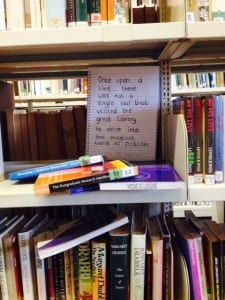
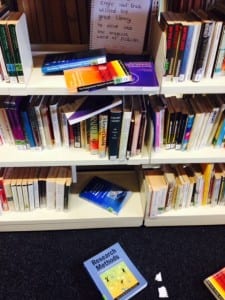
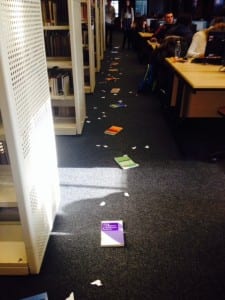
![photo[1]](https://sitespecific2015dhu.blogs.lincoln.ac.uk/files/2015/03/photo1-242x300.jpg)
![photo_1[1]](https://sitespecific2015dhu.blogs.lincoln.ac.uk/files/2015/03/photo_11-229x300.jpg)
![photo_3[1]](https://sitespecific2015dhu.blogs.lincoln.ac.uk/files/2015/03/photo_311-300x220.jpg)
![photo_2[1]](https://sitespecific2015dhu.blogs.lincoln.ac.uk/files/2015/03/photo_211-219x300.jpg)
![photo_4[1]](https://sitespecific2015dhu.blogs.lincoln.ac.uk/files/2015/03/photo_411-300x195.jpg)
![photo_4[1]](https://sitespecific2015dhu.blogs.lincoln.ac.uk/files/2015/03/photo_41-190x300.jpg)
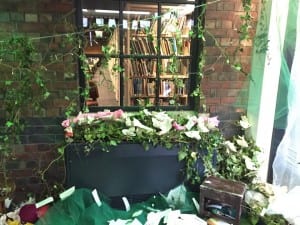
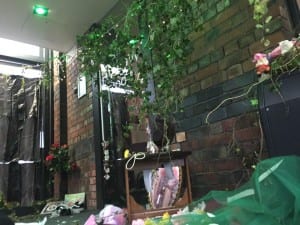
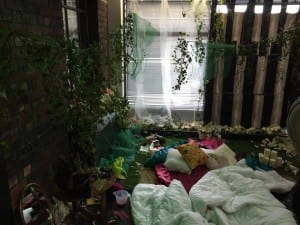
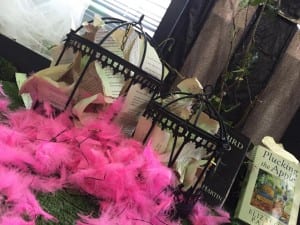
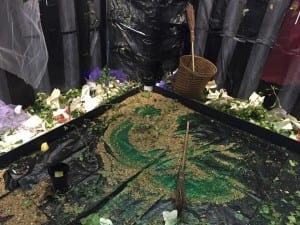
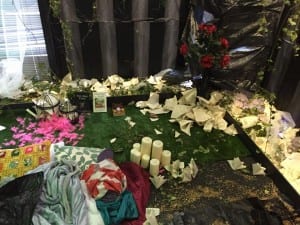

![photo_1[2]](https://sitespecific2015dhu.blogs.lincoln.ac.uk/files/2015/03/photo_12-225x300.jpg)

